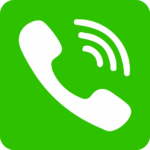3.5″ inch ili9486 TFT Touch Shield LCD Module 480×320 for arduino uno mega2560
3.5″ ILI9486 TFT Touch Shield LCD Module
480×320 Resolution, Resistive Touch, Compatible with Arduino UNO R3/Mega2560
Introduction
The 3.5-inch TFT LCD Shield features a 480×320 high-resolution display with ILI9486 controller and resistive touch overlay. This plug-and-play shield provides a vibrant graphical interface for Arduino projects with built-in touch input capability.

Key Features
High Resolution
480×320 pixel display
Touch Input
Resistive touch screen
Direct Compatibility
UNO/Mega2560 pinout
Rich Colors
18-bit color (262K colors)
Technical Specifications
| Display Type | TFT LCD with Resistive Touch |
|---|---|
| Resolution | 480×320 pixels |
| Controller | ILI9486 |
| Color Depth | 18-bit (262K colors) |
| Viewing Angle | 140° |
| Interface | 8-bit parallel + SPI (touch) |
| Operating Voltage | 5V (compatible with 3.V logic) |
| Dimensions | 86×55mm (UNO shield size) |
Pin Configuration

| Arduino Pin | TFT Function | Touch Function |
|---|---|---|
| D2-D9 | LCD Data Bus (D0-D7) | – |
| D10 | LCD CS | – |
| D11 | LCD MOSI | T_CLK |
| D12 | LCD MISO | T_OUT |
| D13 | LCD SCK | T_CS |
| A0 | LCD RS/DC | – |
| A1 | LCD WR | – |
| A2 | LCD RD | – |
| A3 | LCD RESET | – |
| A4 | – | T_DIN |
| A5 | – | T_DO |
Note: On Mega2560, the shield uses different pin mappings – check documentation
Library Installation
- Open Arduino IDE
- Go to Sketch > Include Library > Manage Libraries
- Search for “MCUFRIEND_kbv” and install
- For touch: search “Adafruit TouchScreen“
- For graphics: “Adafruit GFX Library“
Basic Display Test
#include <Adafruit_GFX.h>
#include <MCUFRIEND_kbv.h>
MCUFRIEND_kbv tft;
void setup() {
uint16_t ID = tft.readID();
tft.begin(ID);
tft.fillScreen(TFT_BLACK);
tft.setRotation(1); // Adjust orientation
tft.setTextColor(TFT_WHITE);
tft.setTextSize(2);
tft.setCursor(50, 100);
tft.println("Hello World!");
tft.drawRect(50, 150, 100, 50, TFT_RED);
tft.fillCircle(250, 200, 30, TFT_BLUE);
}
void loop() {}
Touch Screen Example
#include <TouchScreen.h>
// Touchscreen pins (UNO)
#define YP A3 // must be analog
#define XM A2 // must be analog
#define YM 9 // can be digital
#define XP 8 // can be digital
TouchScreen ts = TouchScreen(XP, YP, XM, YM, 300);
void setup() {
Serial.begin(9600);
}
void loop() {
TSPoint p = ts.getPoint();
if (p.z > ts.pressureThreshhold) {
Serial.print("X = "); Serial.print(p.x);
Serial.print("\tY = "); Serial.print(p.y);
Serial.print("\tPressure = "); Serial.println(p.z);
}
delay(100);
}
Optimization Tips
Reduce Memory Usage
tft.setAddrWindow(x, y, w, h); tft.pushColor(color, count);
Partial updates instead of full redraws
Faster Rendering
tft.startWrite(); // Multiple operations tft.endWrite();
Batch drawing commands
Custom Fonts
#include <Fonts/FreeSansBold18pt7b.h> tft.setFont(&FreeSansBold18pt7b);
Use built-in or custom fonts
Troubleshooting
Blank/White Screen
- Verify shield is properly seated
- Check tft.begin() with correct ID
- Try different rotation values (0-3)
Touch Not Working
- Confirm touch library installed
- Check pin mappings match your board
- Calibrate touch coordinates
Slow Performance
- Use optimized drawing methods
- Reduce color depth if possible
- Consider using Mega2560 for more RAM
Related Posts
IC 74173 – 4-Bit D-Type Register with 3-State Outputs
IC 74173 - 4-Bit D-Type Register with 3-State Outputs
TTL Quad D Flip-Flop with Asynchronous Clear and Output Enable
...
DIY Metal Detector Kit
DIY Metal Detector Kit
DC 3V-5V Non-Contact Sensor Module with 60mm Detection Range
Introduction
The DIY Metal Detec...
CNC V3 Shield with 4 A4988 Drivers
CNC V3 Shield with 4 A4988 Drivers
Complete Arduino-compatible CNC controller for 3D printers and milling machines
...
CN3791 12V MPPT Solar Charger Module
CN3791 12V MPPT Solar Charger Module
Maximum Power Point Tracking Solar Charge Controller for Lead-Acid/Lithium Batteries
...
CJMCU-TRRS 3.5mm Jack AV Stereo Module
CJMCU-TRRS 3.5mm Jack AV Stereo Module
Compact breakout board for audio/video signal interfacing with TRRS connectors
...
TTP223 Capacitive Touch Sensor Module (Red)
TTP223 Capacitive Touch Sensor Module (Red)
Single-Key Touch Detection with Digital Output for Arduino and DIY Projects
...



Recent Comments